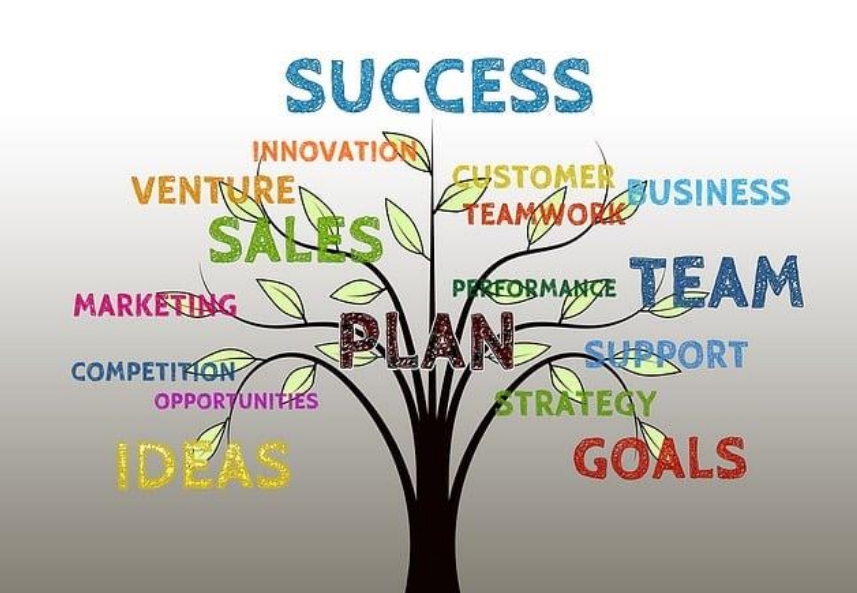Developing a strategy for sales and marketing isn’t as much about creating as it is about researching. Many people entering the sales force rightfully believe they need to market themselves but have a misperception of what that involves.
A consumer prefers not to be sold to. When a salesperson creates ads and begins cold-calling leads with no concept of their audience, the only thing they have to offer is “BS.” You can avoid this with pointers from the “no BS marketing” popular newsletter.
An adequate strategy involves discovering who the primary target audience is, what encourages them to buy, and how the company and you, as the person selling to them, fit within that market. The data you compile will be the foundation for your sales and marketing strategy.
If the expertise is beyond your reach for establishing the right strategy or the company lacks the talent or time to invest consistency and effort alongside daily operations, reaching out to an external resource will benefit the business by leaps and bounds.
That’s not only with improvements in customer satisfaction but increases in conversions because the consumer will feel recognized. Consider these suggestions for an efficient and effective sales and marketing strategy, whether developed internally or with an outside resource.

Tips On Establishing An Effective Sales And Marketing Strategy
You must recognize your target group before developing an adequate marketing strategy as a salesperson. If you go headfirst into producing advertisements and signage, plus start cold-calling leads, how will you approach them? Find details on the difference between sales and marketing at https://www.indeed.com/career-advice/finding-a-job-difference-between-sales-and-marketing/.
People don’t like to be sold to, especially by someone who doesn’t know what they need or want, where they live, what their life entails, and can’t resolve their problems.
To develop the appropriate strategy, you need to really know who you’re talking to, what they’re about, what motivates them to do business with a company, and how you and your business fit with their market. Let’s look at a few tips to help get you started.
-
Research/Update An Ideal Client Persona
Pay attention to who your previous clients were, which among them were the best, and why. Those traits made them not only pleasant to work with but profitable. Ensure the ideal consumer persona is updated to reflect the target demographic meant to reach your current objectives.
These always include growth, greater reach, and further success. To do that, you must continually study your client, know who they are, how they evolve, and respond to their needs.

-
Document the client’s experience
Each client profile should contain documentation about their experience as they work toward converting. Each lead takes many small moves on their path before making a purchase. In your role with sales and marketing, it’s essential to plot each point of interaction.
That’s whether it’s with content, on the telephone, or with an individual within the company. Every profile will consist of a unique journey.
As you document each step, you’ll start to notice a pattern as to what happens before signing the contract. Each interaction will reveal objections, motivation, and specific questions and concerns. You can then prepare your actions to meet the client at each point with ready answers.
-
Get feedback
Feedback is exceptionally beneficial, and the target demographic is the ideal person to provide honest input. While you always want to outshine the competition and stay one step ahead, the only way to know why a customer chose you over the other options is to ask them the question.
Speak with your clients to discover why and then ask what would make them go to the competitor. This will let you know where you can improve to prevent that.

-
Assess the sales process and document the details
The sales process should primarily contribute to achieving company growth goals, with each team member utilizing comparable methods to achieve successful results.
Always be mindful of current technologies and new methods to ensure you’re up to date or need to find a way to be more efficient and effective, possibly using more automation. The key is making sure that no client is “lost” or neglected based on insufficient resources, lack of energy, or not enough time.
-
Marketing collateral and online marketing should be regularly reviewed
Digital and printed marketing must be produced with the intention of drawing the ideal persona for you to communicate the brand’s unique qualities to leads and existing clientele. Copyright dates should be regularly reviewed and kept current.
The business website and social networks must offer compelling and educational content for the ideal client to be drawn to and ensure the interaction is with the appropriate target demographic.

Final Thought
Putting together a sales and marketing strategy is tough, creating a lot of pressure for those involved, chiefly because what you strategize and implement needs to produce ROI rather rapidly.
In the world of sales and marketing, your focus is still attempting to increase revenue by getting the leads and converting them into buyers who become loyal and return repeatedly.
But this can’t be the primary focus nowadays—the client or the target persona, or the demographic needs to be where you focus your attention.
If you don’t know this audience, really get to know their story; they have a lot of competitors they can turn to who might have taken the extra time to learn everything about them.
A priority is not putting out ads or cold-calling leads as a salesperson or marketer with no inkling of who these people are. Most of these individuals who receive these ads or calls will toss the ad and hang up the phone, forgetting about you a moment later.
Much more research goes into the client’s profile nowadays if you want to start their experience and progress them through the journey, ultimately converting them to a buying customer. Doing the work takes you on the path to growth and success.





